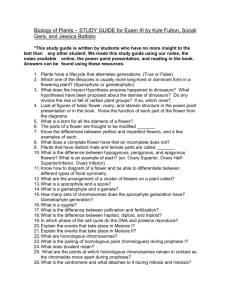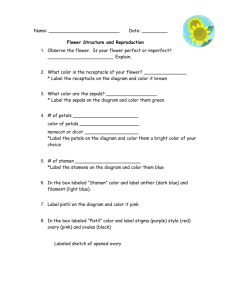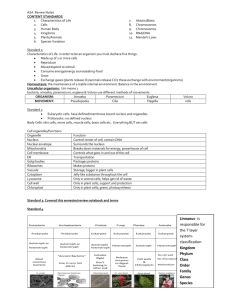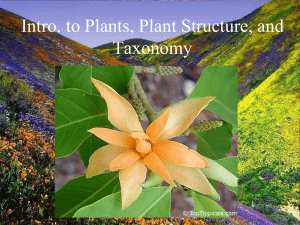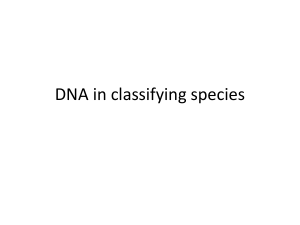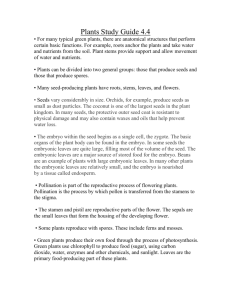Applied Genetics Guided Notes
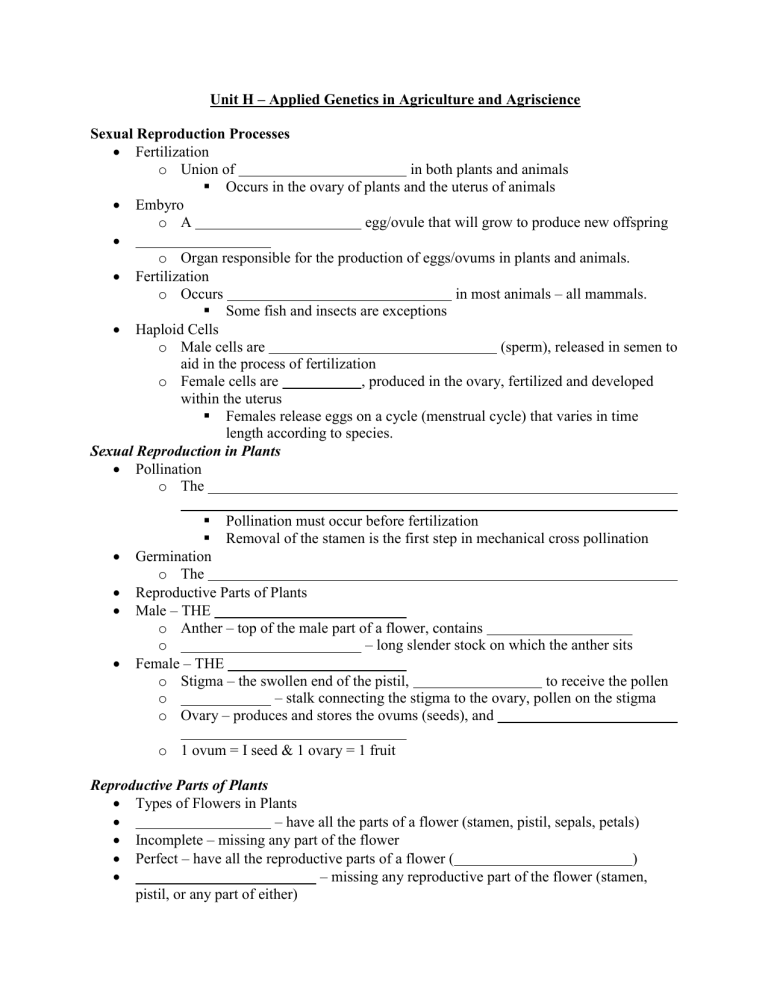
Unit H – Applied Genetics in Agriculture and Agriscience
Sexual Reproduction Processes
Fertilization o Union of in both plants and animals
Occurs in the ovary of plants and the uterus of animals
Embyro
o A egg/ovule that will grow to produce new offspring o Organ responsible for the production of eggs/ovums in plants and animals.
Fertilization o Occurs in most animals – all mammals.
Some fish and insects are exceptions
Haploid Cells o Male cells are (sperm), released in semen to aid in the process of fertilization o Female cells are , produced in the ovary, fertilized and developed within the uterus
Females release eggs on a cycle (menstrual cycle) that varies in time length according to species.
Sexual Reproduction in Plants
Pollination o The
Pollination must occur before fertilization
Removal of the stamen is the first step in mechanical cross pollination
Germination o The
Reproductive Parts of Plants
Male – THE o Anther – top of the male part of a flower, contains o
Female – THE
– long slender stock on which the anther sits o Stigma – the swollen end of the pistil, to receive the pollen o – stalk connecting the stigma to the ovary, pollen on the stigma o Ovary – produces and stores the ovums (seeds), and o 1 ovum = I seed & 1 ovary = 1 fruit
Reproductive Parts of Plants
Types of Flowers in Plants
– have all the parts of a flower (stamen, pistil, sepals, petals)
Incomplete – missing any part of the flower
Perfect – have all the reproductive parts of a flower (
)
– missing any reproductive part of the flower (stamen, pistil, or any part of either)
Asexual Reproduction & Cloning
Cloning in Agriscience o Allows rapid production of large numbers of
organisms.
Agriculturalists can quickly disseminate outstanding traits. o Most often utilized for the culture of plants – o The ability to differentiate is more in plants than animals
Tissue culture o the production of plants from small amounts of vegetative material in an o an increasingly popular and effective method of plant production.
Animals are cloned almost exclusively by the division of . o In recent years, diploid cells have been cloned, but the process is extremely expensive and results in high losses.
Clones are (the exact same DNA) o Any genetic differences results from environmental factors
Disease, nutrition, physical injuries, etc.
Asexual Propagation of Plants
16.04 – Demonstrate proper technique in simple asexual propagation of plants
Stem Cuttings o Section of the stem or a branch is cut, treated with and placed in soil or water to encourage the development of roots. o Should always be taken just above a node for best rooting o o Used for both
Air Layering
and o Section of the stem or branch has the
plants.
and a rooting hormone applied. o Area is then covered with soil wrapped cellophane until well developed roots can be seen through the plastic o Branch or stem is cut below the roots only after roots have fully developed.
Tissue Culture o Common method using
Often uses
amounts of plant material
The tip of a branch where most active growth is occurring o Tissue is removed from the plant, sterilized and cultured on agar in aseptic conditions o tissue develops shoots, is transferred to another media to develop adventitious roots, is hardened off, and finally transferred to soil.
Division o Method of plant propagation conducted by
Often used for grasses and lilies
a plant into several smaller plantlets
A variation is the production of non-tunicate bulbs from scales
Each scale must contain a part of the bottom of the bulb, the basal plate
o Process of removing plant material from one plant for incorporation into another plant
Often used with fruit trees to create dwarf varieties
Two parts
– top portion of a graft that will form the main part of the plant
– bottom portion of the graft that usually controls growth habit (size of the plant) but produces no vegetation o is related to grafting
Instead of using a scion, exchange of plant material is accomplished with a single bud o Scion and rootstock remain combination
even after
Transgenic Organisms - 16.05 – Explain methods of gene insertion used in the creation of transgenic organisms
Characteristics o Can potentially be created using genes from organism
The trick is finding a method for insertion and successful expression o Genetically modified organisms (GMOs) transmit inserted genes at the same rate as
Once a gene is inserted, it can be passed on through sexual reproduction
Steps in Creating a GMO o Develop a
Transmission of genes from one organism to another is both
Expectations for work should be laid out carefully o DNA must be extracted from the target organism and the specific gene to be introduced isolated utilizing o
are used from the transmission of genes
make good vectors, as they often insert DNA into organisms they affect
Plasmids are the viruses most often used as vectors
Plasmids can store or even one or more chromosomes
Some vectors can transmit genes simply through contact with target cells in a liquid solution or by microinjection. o Isolated DNA is inserted into the new organism by:
Isolated DNA segment is injected into a target cell utilizing a microscopic syringe under high magnification o Most common
Uses a to fire gold plated .22 caliber shells that have been covered with the target gene into a mass of plant cells o Most often used for plants, as cell is high

